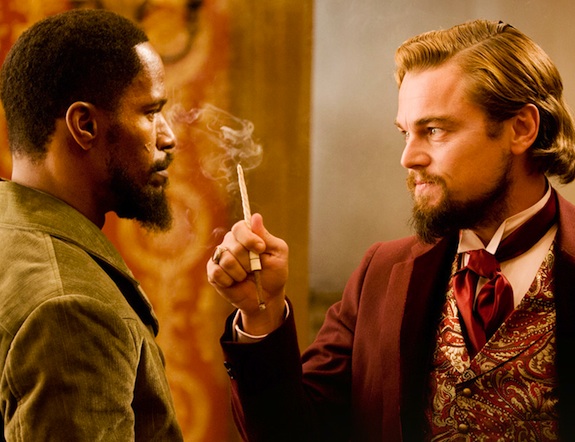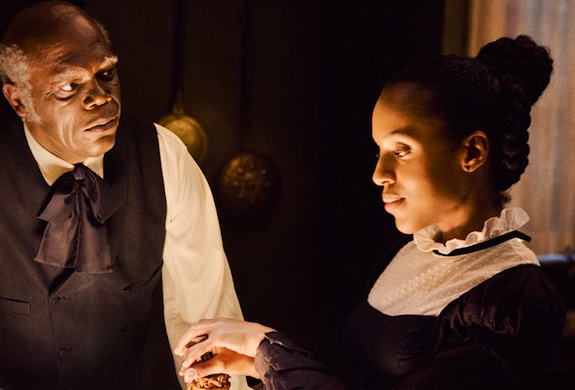What Django Unchained Got Wrong: A Review From National Museum of African American History and Culture Director Lonnie Bunch
The museum director and former film studies professor examines Quentin Tarantino’s take on slavery
![]()
For more than two centuries slavery dominated American life, the shadow of slavery shaped everything from politics to the economy, from Westward expansion to foreign policy, from culture to commerce and from religion to America’s sense of self. And yet, contemporary America has little understanding or tolerance for discussions about the enslavement of millions. In many ways, slavery is the last great unmentionable in American public discourse. So I was hopeful and interested when I learned that Quentin Tarantino was to tackle the subject of slavery in his movie Django Unchained.
At nearly three hours long, Django Unchained is as much about slavery as a spaghetti Western is about the realities of the American West. Slavery is little more than a backdrop, a plot device for Tarantino’s musings on violence, loss, individual and collective evil, sex and retribution. The notion of a black man (Jamie Foxx as Django) willing to risk all to regain the wife (Kerry Washington as Broomhilda) who was taken from him when she was sold like chattel is a powerfully compelling narrative, one that is ripe with historical accuracy, drama and pain. Unfortunately, the richness of this story is obscured by the Sam Peckinpah-like violence and by the overly broad characterizations that reduce the character’s humanity to caricature. I understand the power of satire and the fact that it is “just a movie,” but the story of slavery deserves a much more nuanced, realistic and respectful depiction.
There are, however, aspects of the film that successfully illuminate the dark corner of the enslavement of African Americans. Tarantino captures the manner in which violence was an everpresent aspect of slave life that helped to maintain and protect the institution of slavery. The scenes where Broomhilda is viciously whipped or where Django removes his shirt to reveal a lifetime of scars are the movie’s most accurate and most painful moments. Tarantino also exposes the sexual abuse and the lack of control that enslaved women had over their bodies: to the movie’s credit, it does not shy away from the realities of sex across the color line. While Leonardo DiCaprio’s over-the-top depiction of plantation owner Calvin Candie often brought inappropriate chuckles from the audience, DiCaprio does capture the unchecked and capricious use of power that was at the heart of the plantation system. And Candie’s overly friendly and unrealistic relationship with the black head of his household (Stephen, wonderfully created by Samuel L. Jackson), nevertheless, does reflect the status that some enslaved garnered from their proximity to the master.

Leonardo DiCaprio plays the unsettling Calvin Candie. Courtesy of Columbia Pictures/Sony Pictures Digital Inc.
Yet these moments are far too fleeting in a three-hour movie. One of the biggest disappointments is the depiction of enslaved women. I had been quite impressed with Tarantino’s direction of Jackie Brown, a movie that allowed Pam Grier to explore the limits and the strength of a woman caught in a difficult situation. So I hoped that the women in Django Unchained would have a depth and a sense of completeness that would enhance the film. Unfortunately, the enslaved women are either sexual partners or cowering individuals waiting to be rescued. During slavery, many women struggled to define and to defend themselves in circumstances that sought to strip them of their humanity. Women found ways to maintain a sense of family and a belief in the possibilities of future that they could only imagine. These women do not appear in Django Unchained.

Stephen (Samuel L. Jackson) confronts Broomhilda (Kerry Washington). Courtesy of Columbia Pictures/Sony Pictures Digital Inc.
Quentin Tarantino is a gifted filmmaker but this is a flawed presentation. My only hope is that this film opens the Hollywood door that would encourage others to create movies that are much more respectful and provide a more nuanced interpretation of America’s greatest sin, the institution of slavery–an institution whose impact and legacy still color who we are today.
Lonnie Bunch, the director of the National Museum of African American History and Culture, taught film history at the University of Massachusetts. The museum’s latest exhibition, “Changing America: The Emancipation Proclamation 1863 and the March on Washington 1963,″ is on view through September 15, 2013, at the National Museum of American History.
/https://tf-cmsv2-smithsonianmag-media.s3.amazonaws.com/accounts/headshot/lonnie_new1.jpg)

/https://tf-cmsv2-smithsonianmag-media.s3.amazonaws.com/accounts/headshot/lonnie_new1.jpg)